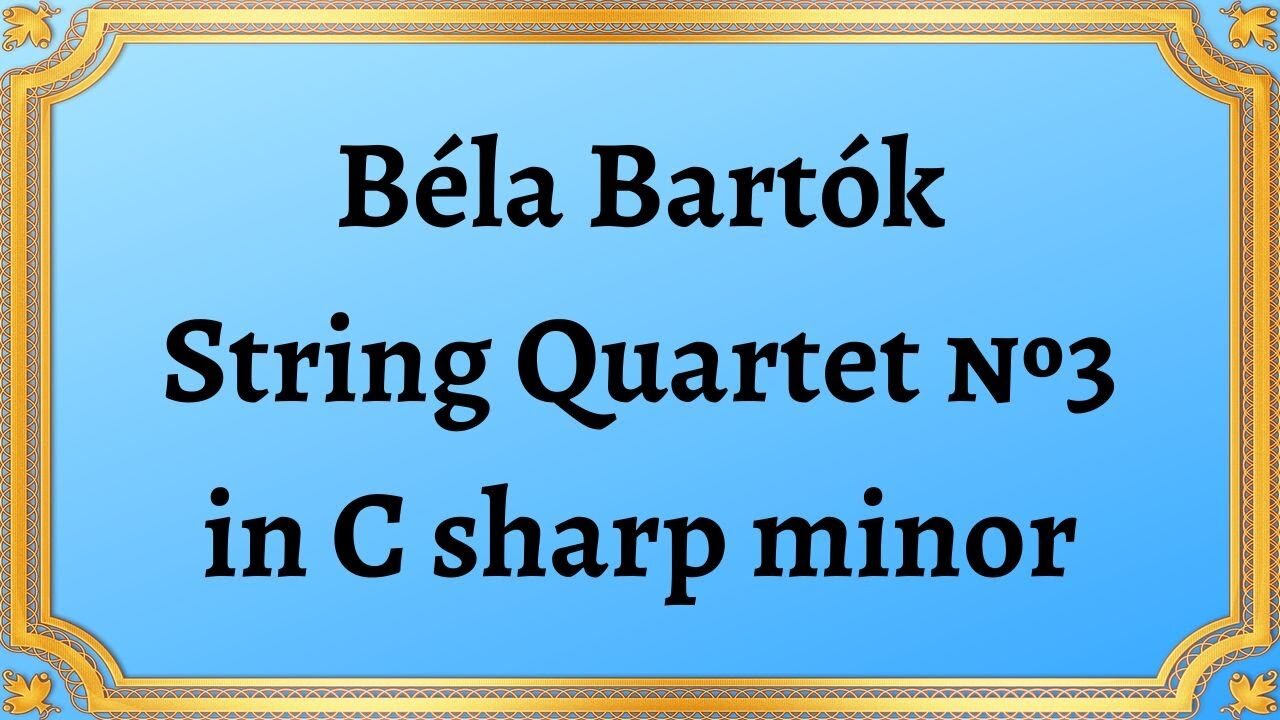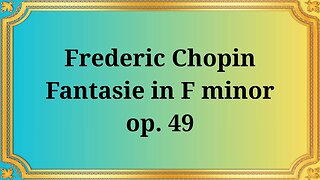Premium Only Content

Béla Bartók String Quartet №3 in C sharp minor
#BélaBartók #StringQuartetNo3 #Csharpminor #classicalmusic #musicalcomposition
Publication date 1950
THE JUILLIARD STRING QUARTET
Robert Mann and Robert Koff, Violins;
Raphael Hillyer, Viola;
Arthur Winograd, ’Cello
Béla Bartók String Quartet No. 3 in C sharp minor is a musical composition that has been recognized by many as one of the most iconic pieces of classical music. The piece is renowned for its complex structure, intricate harmonies, and unique musical language.
The history of Béla Bartók String Quartet No. 3 in C sharp minor dates back to the early 1920s when Béla Bartók was commissioned to compose a piece for the Coolidge Foundation in America. Bartók, who was known for his innovative approach to classical music composition, set out to create a piece that was unlike anything that had been created before. He drew inspiration from his extensive travels throughout Eastern Europe and incorporated elements of folk music into his composition.
The musical elements of Béla Bartók String Quartet No. 3 in C sharp minor are a testament to Bartók's unique style of composition. The piece is structured in five movements, each with its own distinct character. The first movement, marked "Prima parte: Moderato", opens with a haunting melody played by the cello. The second movement, marked "Allegro", is a fast-paced, energetic movement that features intricate interplay between the instruments. The third movement, marked "Recitativo: Fantasia", is a slower, more contemplative movement that features improvisational elements. The fourth movement, marked "Allegro molto", is a lively, rhythmic movement that features a driving ostinato rhythm. The final movement, marked "Finale: Allegro molto", is a frenzied, high-energy movement that brings the piece to a climactic close.
The significance of Béla Bartók String Quartet No. 3 in C sharp minor in the classical music world cannot be overstated. The piece is widely regarded as one of the most important and influential works of the 20th century. Its innovative use of folk music elements, complex harmonies, and intricate rhythmic structures paved the way for a new generation of classical music composers.
In conclusion, Béla Bartók String Quartet No. 3 in C sharp minor is a masterpiece of classical music composition. Its complex harmonies, intricate rhythmic structures, and innovative use of folk music elements make it a timeless piece that continues to influence and inspire classical music composers to this day.
You have the opportunity to support the channel https://destream.net/live/RadSiarAl/donate
-
 11:13
11:13
Classical music_Music Inspiration
1 month agoFrederic Chopin Fantasy in F minor, Op. 49
742 -
 8:59
8:59
MattMorseTV
16 hours ago $0.03 earnedTrump’s DIRE WARNING to the Senate GOP.
65.6K80 -
 2:13:33
2:13:33
Side Scrollers Podcast
19 hours agoAsmongold SUED for Emotional Distress + Hasan REJECTED+ INSANE Plane Crash + More | Side Scrollers
81K24 -
 21:39
21:39
Nikko Ortiz
4 days agoI Take A North Korean Shooting
74.2K11 -
 23:01
23:01
GritsGG
17 hours agoWarzone Solo Dubular! Last Night Time Solo???
7.81K -
 22:47
22:47
The Pascal Show
14 hours ago $0.02 earnedTHEY’RE HIDING EVIDENCE?! Candace Owens EXPOSES Foreign Connection In Charlie Kirk Shooting
16.3K24 -
 LIVE
LIVE
Lofi Girl
3 years agolofi hip hop radio 📚 - beats to relax/study to
260 watching -

FreshandFit
14 hours agoLas Vegas Takeover!
192K18 -
 2:19:29
2:19:29
Badlands Media
14 hours agoDevolution Power Hour Ep. 404
75.2K41 -
 6:02:58
6:02:58
Drew Hernandez
1 day agoGOP COOKED INTO DENIAL & 12 ISRAELI-LINKED PHONES DETECTED AT UVU DAY OF CK EXECUTION?
55.5K34